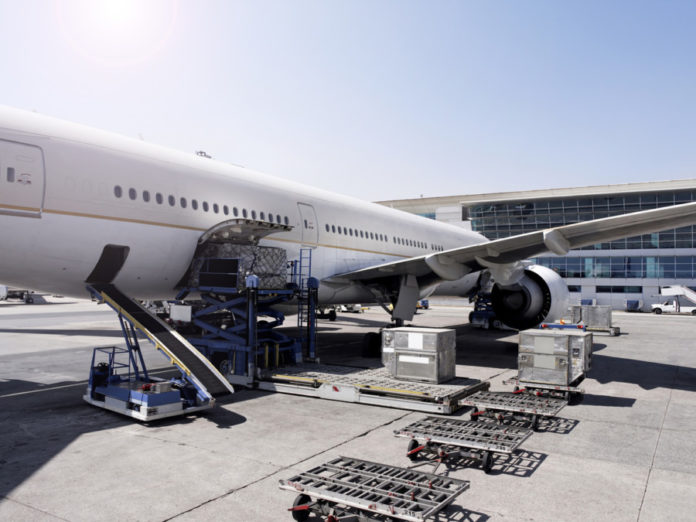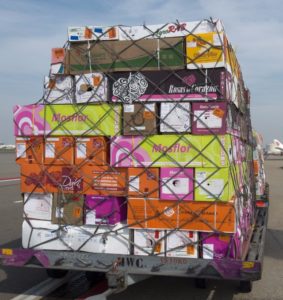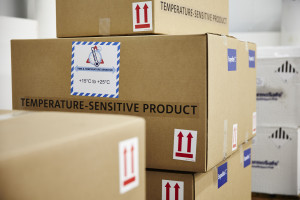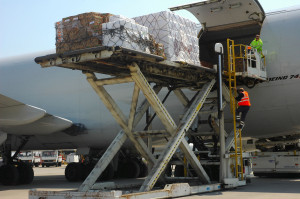

How to read and understand your international airfreight bill by Dedola Global Logistics director of operations, Corina Meoño
While airfreight shipping has similar terminology or equivalents to ocean freight shipping, there are key differences related to charges and fees. In this article, we take a look at what airfreight charges and fees mean on your airfreight bill.
Airfreight – chargeable weight
Airfreight shipment cost is calculated by the “chargeable weight.” The chargeable weight applied to a shipment will be either actual weight or volumetric weight, whichever number is greater. Volumetric weight is calculated at 6000 cubic centimetres per kilogram. Therefore, dividing the cubic centimetre volume of a shipments (L x W x H) by 6000 will result in the volumetric weight.
For example, let’s say you have a shipment that is 80 x 120 x 120 cm with an actual weight of 300 kg. Below is the calculation for volumetric weight:
Volume: 80 x 120 x 120 cm = 1,152,000 cm3 (cubic centimetres)
Volumetric Weight: 1,152,000 cm3 / 6000 = 192 kg
Therefore, for this example, the chargeable weight will be 300 kg since the actual weight is larger than the volumetric calculation.
Another thing to keep in mind about international airfreight: All measurements are using the metric system, meaning kilograms and centimetres/metres, not US pounds and inches/feet. If your shipping department is used to pounds and feet (as is common practice in US domestic shipments), don’t worry, your trusted freight forwarder can convert and help avoid measurement misunderstandings.
It’s also important to understand ‘weight breaks’ from your air quote. As your shipment gets larger, you pay less per kilogram for the shipment at set intervals. For example, if your shipment is more than 100 kg, your rate may be $3/kg; however, if your cargo is more than 300 kg, the rate could decrease to $2.75.
Fuel surcharge
This is the fee you’ll pay for the cost of fuel plus various surcharges from the airlines. Since the cost of oil can fluctuate, you’ll see it as a fuel surcharge on the bill. Similar to airfreight cost, the fuel surcharge is applied per kg of chargeable weight.
Ex Works
This is an incoterm, one of the defined trade terms published by the International Chamber of Commerce (ICC). These terms are internationally recognised and are used by you and your supplier to delineate risk and cost throughout the shipping process.
Ex Works on a shipping quote (abbreviated as EXW), also known as origin charges, covers the cost of bringing your cargo from your supplier to the origin port of departure. Ex Works charges can include customs clearance, licenses, etc.
Door delivery
This is the cost you pay to get from the destination airport to your final destination. There may be additional charges related to door delivery depending on your shipment’s requirements. For example, if you don’t have a loading dock, a lift gate may be necessary. Or, hazardous shipments would be subject to an additional door delivery surcharge.
Documentation fee
This is the documentation fee. It’s a surcharge from your airfreight forwarder to cover the costs of preparing the required documentation to ship your product.
Insurance
If you insure your shipment, which is always recommended, you’ll see an insurance charge on the invoice. Insurance is normally charged at a rate per $100 of value (for example, $0.45 per $100). The premiums for general commodities will often be the same. General commodities would include new merchandise that is not easily breakable. New toys, auto parts, bicycles, and shoes are some examples.
Fragile commodities like glassware would be charged at a higher rate.
Airline terminal fee
This is the charge you’ll pay for the airline handling your cargo at the terminal. In some cases, you’ll see this charge broken out from both the origin airport and the destination airport.
Airline security
These are fees charged by the Transportation Security Administration (TSA) to cover protecting the airline transportation industry from security and safety threats. For your air freight, the cost varies based on cargo weight, as well as its origin and destination.
Customs entry
This is the cost for the customs broker to submit the necessary payments and documentation to get your product cleared through customs. Custom brokers are experts in navigating US Customs and Border Protection (CBP), from knowing how to classify your goods in the tariff system to the various government policies that regulate trade.
If products need to be approved for entry by another government organization, such as the FDA or Department of Transportation, there may be additional fees on your bill.
Customs duties and taxes
Customs duties and taxes are levied by the US government based on how your goods are classified under the Harmonized Tariff Schedule. Duties are typically assessed on a percentage of the commercial invoice of your product.
Misc fees
These fees cover a range of items that may or may not be on your airfreight bill, but can include:
● Storage: Covers the cost of storing your cargo if it is not picked up from the terminal on time.
● Exams: The fee assessed by US Customs to examine your shipment if necessary. The types of exams range from your cargo simply going through an X-ray to being hauled over to another location to be fully broken down and examined. To lessen your chances of paying for exams, ensure your documentation is correct and in order.
Still not sure how to read your airfreight bill? Reach out to your air freight forwarder, who can help you navigate the world of airfreight.














